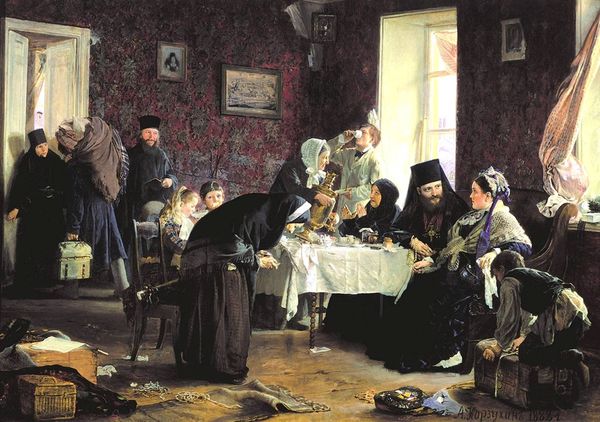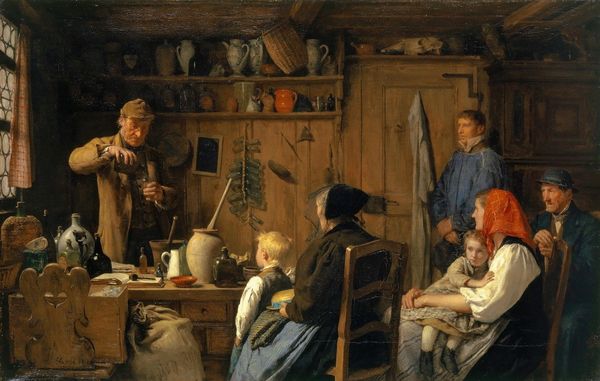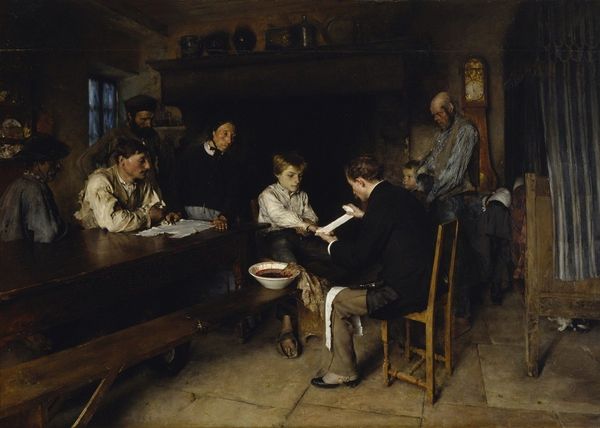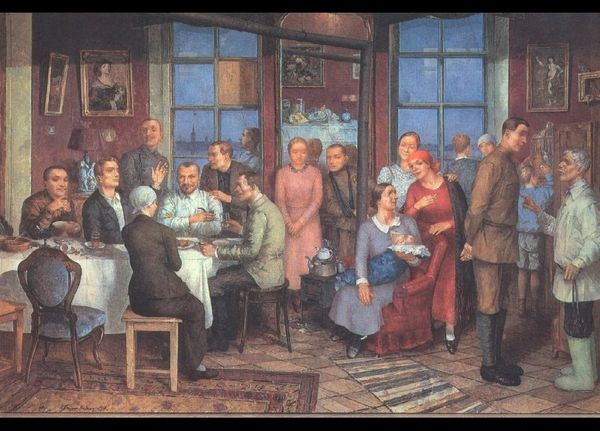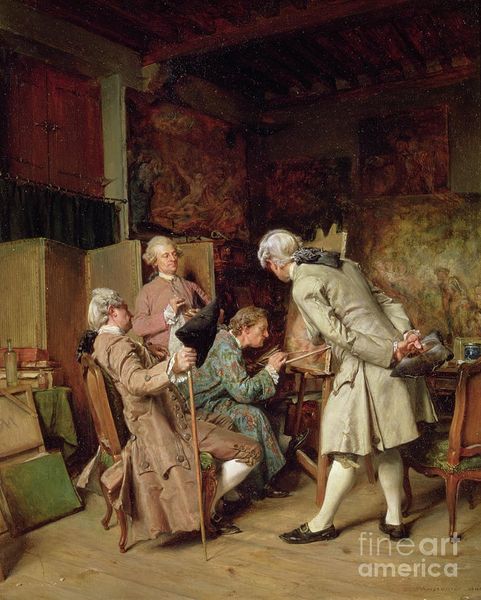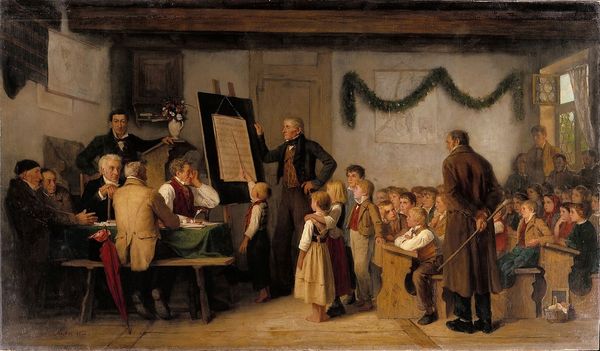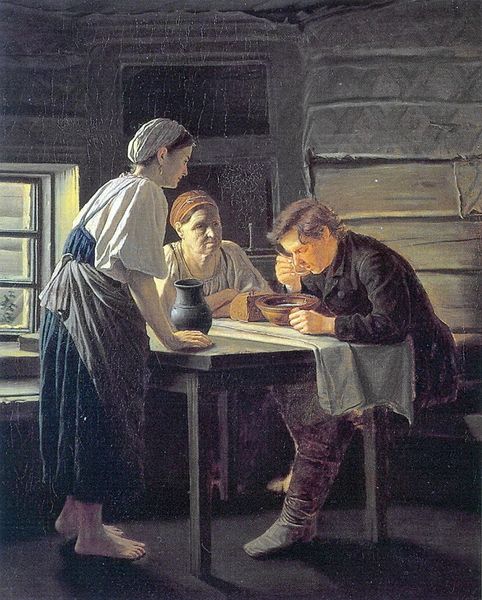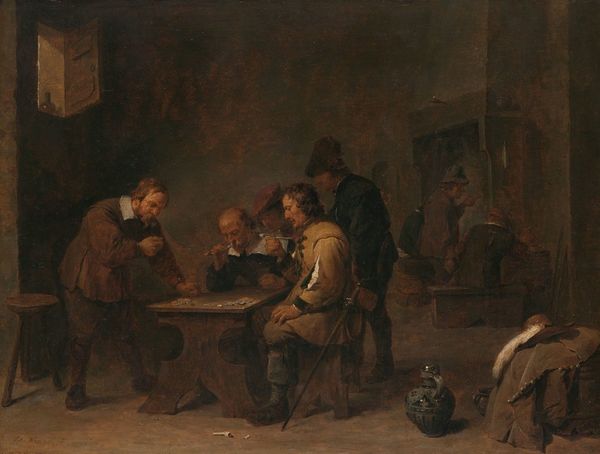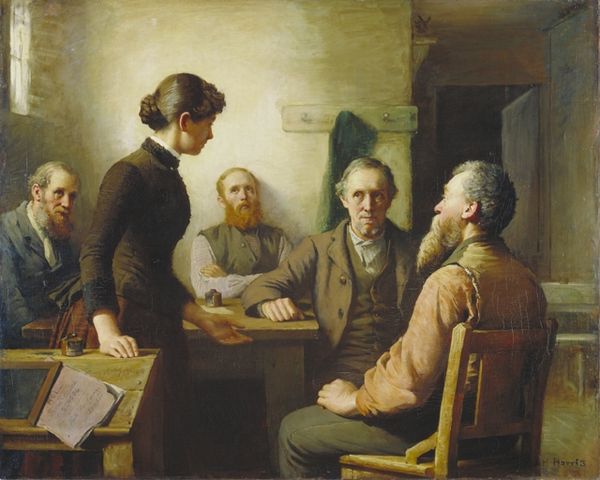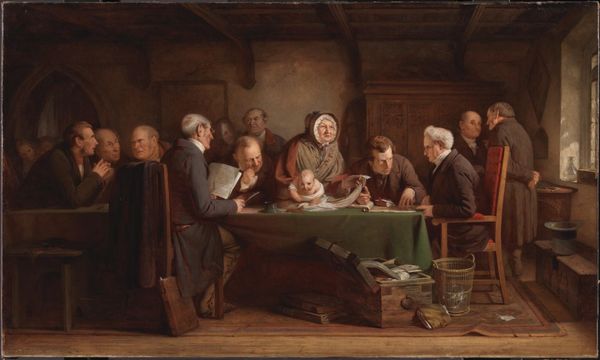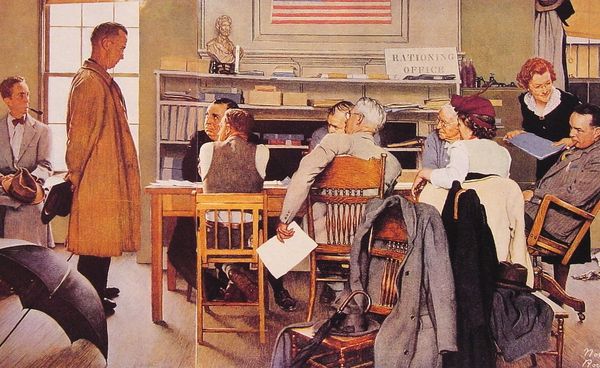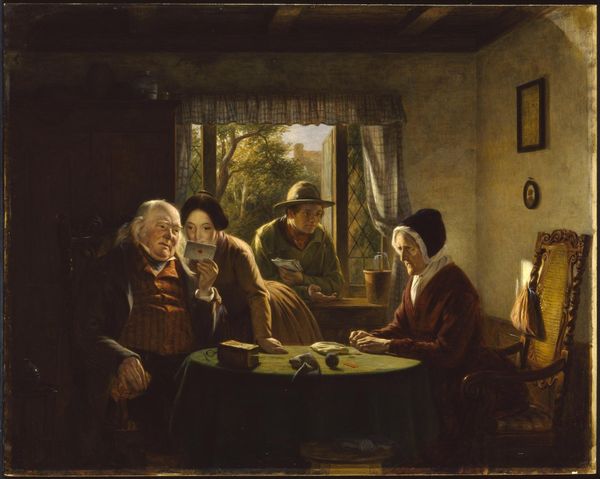
Copyright: Public domain
Editor: This is Albrecht Anker's "The Civil Wedding," painted in 1887 using oil paints. There's a real sense of subdued solemnity, wouldn't you agree? How would you interpret this work? Curator: It's a seemingly simple genre scene, isn't it? But look closer. Who holds the pen, who witnesses? This work prompts us to consider the role of women within 19th-century social structures and legal frameworks. Anker places the act of marriage, a fundamental societal building block, within a context where women’s agency was constrained. Do you think the composition supports this reading? Editor: Well, the woman is central, actively signing, but also surrounded and watched... Almost as if the community, particularly the men, needs to validate this. Curator: Precisely. And the inclusion of children, along with the older generation, speaks to the intergenerational perpetuation of these norms. Consider, too, how the visual weight shifts across the painting, and how that tension informs our understanding of power dynamics at play here. In thinking about how this echoes today, can art expose injustices by examining the personal within broader historical and political contexts? Editor: It does give a new perspective by portraying something so intimate. Before, I just saw a regular scene, now it feels much more loaded. I'll definitely see the world with a different set of lenses now! Curator: Indeed, art holds a mirror to ourselves, challenging and expanding our perspectives through critical dialogue and engagement.
Comments
No comments
Be the first to comment and join the conversation on the ultimate creative platform.
